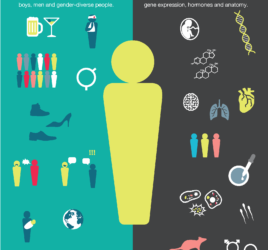
How does multiple sclerosis affect independent mobility?
How does it feel to be immobile? Usually, this is extremely difficult to convey to a healthy and mobile person. However, the recent intelligent lock-down due to the Corona crisis may help to convey this feeling. Imagine that you are not able anymore to go to work (or education), use public transportation, visit friends or family, go to the theatre, attend outside events or even to get medical care. People with multiple sclerosis (MS) are dealing with these mobility problems every day.
Loss of independent mobility is a major consequence of MS, due to progressive deterioration of the central nervous system. Various symptoms can occur, such as fatigue, muscle weakness, chronic pain, problems with balance, bladder problems, vision problems and cognitive decline, all able to affect mobility.
Walking is often impaired in persons with MS and disease severity is often determined by the ability to walk. Therefore, the current literature almost always defines the mobility of persons with MS in terms of walking or transferring inside the home. Other ways of moving about, e.g. moving from A to B outdoor, have not received the attention they deserve.
As you may have felt during the Corona crisis, restricted outdoor mobility impacts daily life dramatically.
This is why my colleagues and I systematically reviewed independent outdoor mobility of persons with MS (van der Feen et al., 2020). As a guidance to fully understand what mobility can comprise, we used the definition of mobility by the WHO: “moving or changing body position or location (1) by transferring from one place to another, (2) by carrying, moving or manipulating objects, (3) by walking, running or climbing or, (4) by using various forms of transportation” (World Health Organization. International Classification of Functioning, Disability and Health. ICF browser).
To travel long distances, one can think of taking the car or perhaps public transportation. However, for persons with MS driving can take too much energy and is often only feasible for a short distance; in other words, their fitness to drive is reduced. About one-third of persons with MS are even prohibited to drive altogether. When driving is not an option, public transportation would be the logical alternative. However, bus stops or train stations can be too far to reach.
Public transport may also be difficult to access when being in a wheelchair. About half of the people patients with MS use a (powered) wheelchair or mobility scooter. For some, this is indispensable, for others a tool for independence and freedom because it enables them to access outside events. However, while a wheelchair does bring some extra independence and freedom, wheelchair-dependence may induce new accessibility problems as well. Driving a car or using public transport is often difficult, and also buildings or outside events may not be suitable for wheelchairs. Being tied to a wheelchair may need extensive planning and arranging, up to a point that it takes too much time and energy up to the point that people stay put. Quality of life then drops.
The impact on daily life, especially for young adults with this disorder is therefore huge. Activities that healthy and mobile persons take for granted are often unfeasible for people with MS; going to work, using public transportation, visiting friends or family, going to the theatre, attending outside events or even getting medical care.
Persons with MS report difficulties reaching medical care, social activities, leisure and work. Distances may be too long, buildings or outdoor places may not be accessible or suitable for wheelchairs, or the workplace may even not have a wheelchair friendly restroom or canteen. In fact, in the United States mobility problems such as these are the main determinant of unemployment among people with MS.
For me personally, being less mobile myself due to a heart condition, it was not that difficult to empathize with these problems. During the process of writing the review, I discovered more about my own mobility and its influence on the decisions I make; finally I bought an E-bike! I was disappointed that I came across only one (!) study investigating or proposing interventions to improve independent mobility in MS.
Our review tells us that MS reduces fitness to drive (hampering long-distance drives) and restrains their use of public transport (because they are tied to a wheelchair or mobility scooter). This hugely impacts on quality of life. I understand that actually curing diseases might be a priority to both scientists and patients, but meanwhile, patients lose jobs and experience social isolation and low self-esteem. Therefore, I plea for more interventions to improve or compensate immobility of people with MS.
References
Van der Feen, F. E., de Haan, G. A., van der Lijn, I., Heersema, D. J., Meilof, J. F., & Heutink, J. (2020, January 1). Independent outdoor mobility of persons with multiple sclerosis – A systematic review. Multiple Sclerosis and Related Disorders. Elsevier B.V. https://doi.org/10.1016/j.msard.2019.101463
Picture from Flickr (all creative commons) by Michael Tutton.



